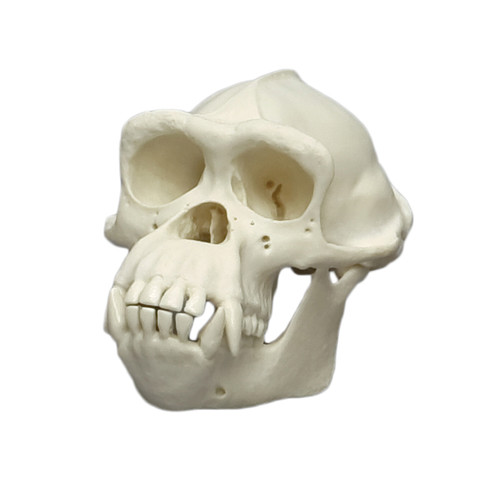Homo sapiens, half-scale skull model
The modern human, Homo sapiens may have evolved in Africa about 100,000 years ago.
Migrations to Europe, Asia and the Americas followed.
The Cro-Magnons of Europe are well-known early examples of anatomically modern humans.
When compared to Neanderthals (Homo neanderthalensis), modern humans have a more upright forehead, less protrusive jaws, smaller brow ridges and a slightly smaller cranial capacity.
Additionally, the face is proportionally smaller leading to a smaller nose, crowded teeth, a weaker mandible, but a well developed chin.
Modern Homo sapiens was predated by archaic Homo sapiens who lived as long ago as 600,000 years.
The skull of archaic H. sapiens was far more robustly built than modern man.
For study purposes, the half-scale modern human skull replica demonstrates some typical human skeletal problems: a deviated septum (the bony divider within the nose), an impacted third molar (wisdom tooth), and a missing tooth (with healed bone).
Model size: 9(L) x 6(W) x 7.5(H) cm
Notes:
- Half scale in three dimensions equates to one eighth scale in volume so models may appear smaller than expected
- This model may also be purchased as part of a set of seven half-scale skulls
- There are several full-sized skull models of modern human (listing Bone Clones models here): male European, female European, male European calvarium cut and female European calvarium cut







